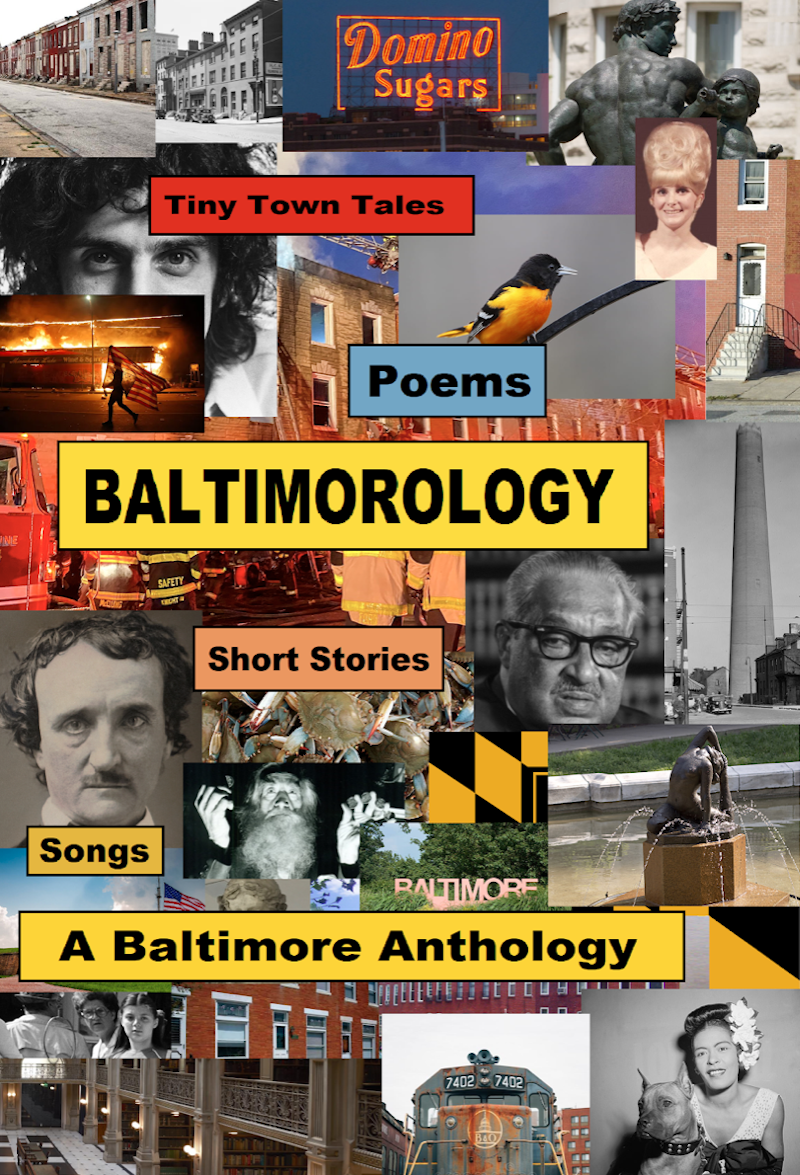I recently finished editing Baltimorology, an anthology of stories about Baltimore. It was an experience. About two years ago I mentioned to Tom DiVenti of Apathy Press Poets that it could be interesting to do a book where people share memories of their Baltimore experiences. He thought about it and got back to me last fall. He then put out a call for submissions and slowly material started coming in.
Apathy Press Poets is DiVenti’s version of “a voice crying in the wilderness.” He began it in the early-1980s to publish local Baltimore poets. At that time, Tom did all the publishing by using a mimeograph machine. He then took a sabbatical during which the computer raised its digital head. I’ve done the technical work for Apathy Press since Tom got it rolling again in 2019. Usually the work takes the form of simply formatting the texts Tom receives into 6 x 9 inch books and making a cover. Baltimorology was different. When I started receiving the texts I realized that just assembling them between two covers and publishing them wouldn’t be very interesting, a context was required. It was necessary to create a background within which the stories would appear as reflections of the same object, that is, Baltimore.
I was working at my desk alternating assembling the texts while complaining to my sister Ruth (who happened to be in Paris for a few days) about the impossibility of the project when she said, “Hey, ask Tom if he remembers the sign from Odell’s Nightclub on North Ave., ‘You Know if You Belong’.” Then, a second later, she said, “Did you know that the first telegraph message was sent from the Supreme Court to Baltimore? It said ‘What hath God wrought.’” I felt like I’d been hit by lightning. Damn right “you know if you belong” when you’re from Baltimore! And as far as “what hath God wrought” that’s anybody’s guess when it comes to Baltimore. Those two quotes served as a catalyst and suddenly the entire book took shape in my mind.
I placed all the material against the backdrop of the entirety of Baltimore’s known history, dating back 10,000 years to the Paleo-Indian period. There would be recurrent historical and cultural events that would place the stories, all dating no further back than 1950 and most since 1970, within the flow of time. It was important to present the material so that the authors who are very different from each other in their social backgrounds were revealed to share in the unity of Baltimore, the unity expressed by the slogan from Odell’s. The material in the book, some by professional writers and some not, exists within what might be called the Baltimore Dimension. It’s sometimes pretentious, poetic, self-indulgent, beautiful, home-grown to the point of absurdity and often cliquish. You Know If You Belong and if you don’t we’ll let you know. But that’s one of Baltimore’s charms.
At times it was a sad task, for at almost every turn something’s described that no longer exists, whether a restaurant, a building, a tradition, a street you can walk down safely, any one of those things that gave Baltimore the moniker of “The Land of Pleasant Living.” I’m not nostalgic because it’s usually a falsified picture, like a cropped photo, of the past. It leaves out the bad to reveal something along the lines of a smiley face icon. The book is not nostalgic, the stories play off against each other to reveal a bigger and more complex picture than any one alone. It helped me realize that I do have a hometown.
—Baltimorology is available directly from Apathy Press Poets and on Amazon Books.

